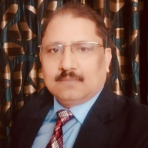Intellectual Property Patents and Pharmaceutical Industry In India
Posted On : April 17, 2017
Listen to this article
Table of Contents
INTRODUCTION :
The pharmaceutical sector in India is a well established, prosperous and technologically advanced industry, which has evolved and developed at a steady and constant rate over the preceding three decades. Presently, a large portion of the pharma-industry is dominated by multiple privately owned Indian companies due to industry-friendly government policies and limited competition from overseas pharmaceutical companies.[1] However, due to liberalisation in the Indian economy, many overseas pharma-giants have stepped into the market.
Factors relating to protection of intellectual property seem to be taking an upward slope with growing scenarios and needs to ensure safeguarding of high-scale investments in research and development (R&D). Therefore, measures are being taken to restrict adversities relating to enforceability and execution of already prevalent intellectual property laws. The Indian government therefore too has taken considerable steps in establishing a patent arrangement that is well-equipped to deal with the technological advancements to meet with its international commitments.
PATENT LAWS IN INDIA :
In the pharmaceutical industry, products that are intended to be used as food, drugs or medicines or are capable to have been produced by means of chemical process, patents are permitted or granted only for the procedures or methods of such manufacturing of products and not the product itself. Therefore, the pharmaceutical products are not protected under the Indian patent law.
India had a product patent procedure for all inventions under the Patents & Designs Act, 1911. In 1970 however, the government put forth a newly modified Patent Act, which did not include pharmaceuticals and agrochemical products under the patenting model. The exclusion was actually put forward to break forth India’s dependency on imports for pharmaceutical products, their formulations and to provide for a self-developed and reliable pharmaceutical industry.
“thus, under our existing patent laws, molecules, which are products of chemical reactions, are as such non-patentable in India. This restriction, coupled with the restriction on mere admixtures resulting in aggregation of properties in which the components do not exhibit any synergistic behaviour, severely limit the items, which can be patented in India. ‘Actives’ prepared by chemical synthesis are as such non-patentable in India even if they exhibit functional properties. Likewise, standard drug formulations in which the ingredients behave as mere admixtures also do not qualify for patents in India. In such cases only the process, i.e. the method of making the product is patentable.”[2]
The low protection for product patents in the pharmaceutical sector has resulted in a considerable effect in the Indian pharmaceutical industry and led to development of significant efficiency in reverse engineering of drugs that are protected under patents throughout the globe but not in India.[3]
This therefore has resulted in the Indian pharmaceutical industry growing rampantly by bringing in equally developed but cheaper versions of drugs patented in the local market eventually stepping into the international pharmaceutical market.
The Patent Act provides for safeguards to regulate abuse of patenting rights and provide for more efficient access to drugs. The tenure of patents in processes of manufacture of products purposed to be used, or capable of being used as food, drug or medicine is set for a period of seven years from the date of filing or five years from the date of patent sealing, whichever is less. However patents relating to other inventions and discoveries are levied for a tenure of fourteen years from the date of filing the patent, unless declared to be invalid.
Another aspect provided for in the Patents Act, are the provisions relating to “compulsory licensing”. After the completion of three years from the date of patent sealing, any person or enterprise intended towards working on the patented invention are advised to apply for compulsory licensing relating to the invention. The controller of patents may also however instruct the patent holder to permit such a license upon the terms as deemed necessarily fit, or if content with the reasonable requirements of the public relating to patented invention not available to people at a reasonable price.
The Patent Act, also deals with a provision for “licenses of right”, wherein , in certain cases the government can after the completion of tenure of three years from the date of patent sealing, apply for an order dealing with the patent be endorsed with the words – “licenses of right”, on grounds of mutual agreement, in spite of being a holder of the license under the patent. Non-compliance to any agreed terms of licensing, application can be made to the controller of patents for terms of settlement be issued.
ESTABLISHMENT AND INTRODUCTION OF THE WTO :
The impact of the World Trade Organisation (WTO), has also led to a colossal pattern shift in world trade. Agreements on Trade-Related (Aspects of) Intellectual Property Rights (TRIPS) was conferred in the Uruguay round table negotiations of the GATT[4] wherein “one of the primary pointers for incorporating intellectual property issues under the GATT jurisdiction was the pharmaceutical industry.”[5] India came under the purview of GATT after signing the agreement on 15th April, 1994, and therefore now it is mandatory for India to comply with the terms of GATT and also the TRIPS in relation to patents and the pharmaceutical industry. Thus accordingly, the Indian patent legislation include provisions for patent availability for both processes inventions and pharmaceutical products. Patents therefore are to be issued for a tenure of 20 years for any invention relating to the pharmaceutical industry if it fulfils the established criteria.
Compulsory licensing under the Indian legislation has to be regulated and conditioned to comply with the set standards of the TRIPS agreement and therefore the government will issue licenses only on the merit of varying cases after giving the patent holder a special right to be heard. As per the agreement, there should not also be any discriminated behaviour among domestic and imported products with respect to process patents. The terms of the TRIPS agreement also include the burden of proof to be vested on the party that infringes the agreement regulations. Complying with the TRIPS commitments[6], India has amended the Patents Act by giving exclusive marketing rights (EMR’s) and created a mailbox system for patenting applications for a term of five years or till the patent is accepted or rejected, whichever is earlier.
The Patents (Amendment) Act 1999, provides for certain provisions and grants the investors a “pipeline protection”. As per the provisions, an applicant who has filed an application for his/her invention in any country, who is a member of the TRIPS convention, and a patent or EMR has been granted on or before 1st January, 1995, the applicant would have the eligibility to file for patents to agrochemicals and pharmaceutical products in India. When the Indian patent legislation evolves as per the WTO guidelines, the pending patent applications become eligible for product patent. Until the patent is approved or disapproved or for a period of five years( whichever is less), the patent applicant would be granted EMR’s in India if the application is declared compatible to the terms of regulation. The Patent Act post amendment lays down guidelines for compulsory licensing for the EMR similar lines as the patent and prohibits Indian investors from applying for patents without the approved consent of the Indian government and the Drug Control Board.
THE WAY FORWARD :
With the product patent protection absent in the Indian pharmaceutical and agrochemical setup, considerable number of multinational drug giants have limited their portfolios to only a few selected patented products. This therefore has resulted in the dilution in the market share of international drug giants in the pharmaceutical market, leading to local manufacturers introducing advanced medication by means of reverse engineering.[7] Royalties for international drugs were to be paid mandatorily by the foreign pharmaceutical companies, and on the contrary Indian pharmaceutical companies had easy access to the latest molecules from across the world and they could then re-design them for sale in the domestic market.[8] The outcome was gradual weakening of patenting rights in the pharmaceutical sector, leading to large scale withdrawal of numerous foreign research-based pharmaceutical brands. The guideline impositions as per the TRIPS agreement, has led to a significant impact on India’s prosperous and conceptualisation-based pharmaceutical industry. With this agreement, the Indian pharmaceutical companies have entered into competition with multinational drug development companies and thereby have introduced their own patented products. On an alternate stand, Indian companies have focused on producing patented goods under license from foreign companies and generating income from producing multi-disciplinary drugs.
In the present context, there exists conflicting views within the purview Indian drug companies with specific transition to the goods patent regime. The various pharmaceutical companies however have conflicting views, while some are of the opinion that product patents will lead the way for innovation in India, others opine that the high cost of R&D would choke the growth of the Indian pharmaceutical industry.
The vitality for the survival of Indian pharmaceutical companies is the increased expenditure on R&D and increased protection of product patents for developing research in inexpensive drugs, which suit the Indian health-care model.
The introduction of product-patent has led to a boost for multinationals who were previously reluctant to invest in India to enter the market and increase competition in the domestic market.
CONCLUSION :
The 1991 liberalisation has helped in developing policies that are concentrated towards attracting capital from overseas nations into developing into a global-industrial base. The eventual inflow of FDI and technology transfers have resulted in creation of scenarios for all-round growth and increased competitive spirit in the Indian pharmaceutical market.
“the current revenues of the Indian pharmaceutical industry amount to nearly US$5.5 billion and it’s estimated growth at a compounded annual growth rate of 19% and touch US$25 billion in revenue.”[9]
India is therefore gradually entering the global market and competing with international drug standard qualities and pricing. Though R&D holds a vital criteria in ensuring a competitive edge in the international market, patent protection still holds the key to the future of the Indian pharmaceutical industry.
[1] The registered count of pharmaceutical companies in India are over 20,000. Market share of multinational pharmaceutical companies have fallen from 75% in 1971 to 35% in the Indian pharmaceutical market, subsequently share of the Indian companies have increased from 20% in 1971 to nearly 65%. : www.indiapharmachem.com .
[2] Gearing up for Patents: The Indian Scenario – Prabuddha Ganguly.
[3] “TRIPS and Pharmaceutical” – www.cuts-india.org/1997-8.htm#Pharmaceutical%20%Industry%20in .
[4] GATT - General Agreement on Tariffs and Trade.
[5] WTO/TRIPs Pharmaceuticals and Health: Impacts and Strategies – Zafar Mirza.
[6] Article 70(8) read with Article 65(2) and (4) of the TRIPS agreement specifically obligates developing countries to provide a mailbox agreement for market rights regime and depositing applications.
[7] “Four opportunities in India’s pharmaceutical market.” – The Mckinsey Quarterly.
[8] www.itd.org/issues/india5.htm. – Trade and Development Study
[9] “Indian Pharma Revenues to touch US$25 billion” – The Economic Times, 1 May, 2014.
Samriddha Gooptu
Next Reads
Recommended Free Legal Advices
Dear Sir,
You may get issue a legal notice claiming huge compensation and then file a civil suit claiming such compensation. You have to establish how much monetary loss you have incurred in this transaction.
I could have explained more if background is known to me. I am at your service if you visit my office.
Please give me FIVE STAR if satisfied by my answers and you may approach me through Vidhikarya for further clarifications.
seen this question in other website also
They have rights on their properties and you can not ask them to vacate.
but you can approach HC for relief for inconvenience to your houses.
all houses should ask for relief together.
There would be no possible objections while using a unique term with the industry specific term as a composite mark. Generally the comparison would be of the unique term. If there exists no similar brand name then you will surely acquire registration.
The term pharma wouldn't be hurdle for acquiring trademark registration. Thus Aries pharma can ne Registered , before filing finally you should get a search done and take opinion for further clarification.
Thank you ..
dear client in your case kindly consult with experienced lawyer for better resolutions
As per law father is the natural guardian of child above 5 years. Fluency in English does not mean that person is intelligent and sane. Many people like from china, Japan, USSR, Israel etc uses translator to communicate.
1. Since child is born in India hence till 18 he can have be Indian citizen or be Australian citizen and on attaining 18 child shall have option to choose citizenship of either country.
2. Yes.
3. Yes. On attaining 18 years he shall have option to choose citizenship of either country.
4. You cannot stop a person from filing case but you have right to defend and also to take precautions to save yourself from such frivolous cases.
Expert Lawyers in
Intellectual Property, Copyright, Patent, Trademark
























